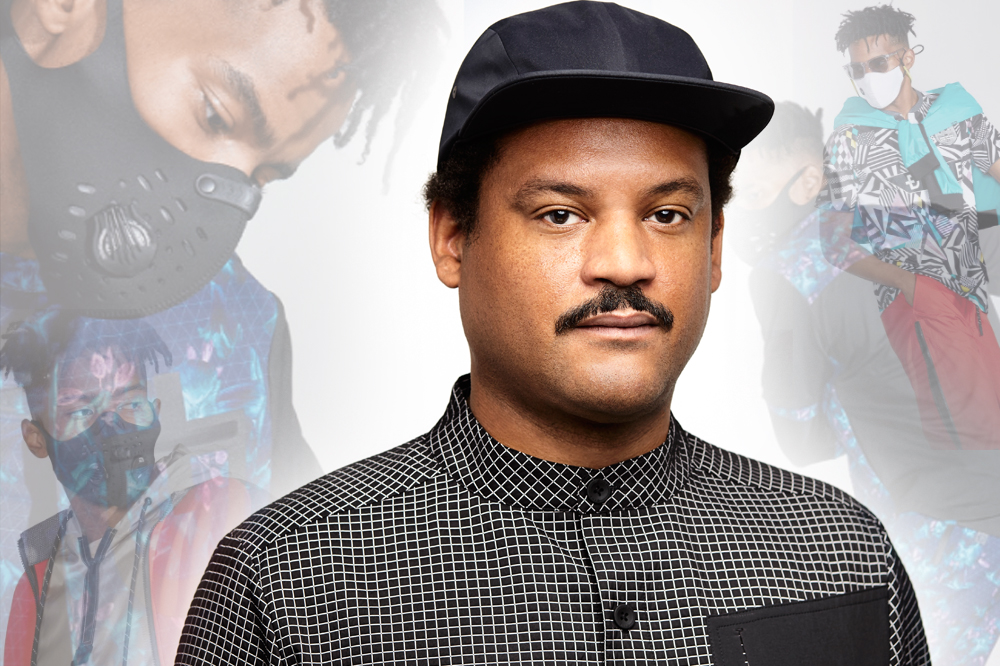In a world where a love and appreciation for fashion is becoming one of the primary things that brings us altogether, seasoned designer Christoper Bevans is one of the leaders in the industry that’s spearheading us into a very fly future with his technical sportswear brand DYNE.
After working in the industry under many titles — he’s held things down as a lead designer for both Sean John and Rocawear, director of urban apparel design for Nike, and creative director for Billionaire Boys Club — Chris is now on the path of doing things under his own leadership with a team of equally innovative players on his side. We saw this firsthand with DYNE’s SS19 presentation back in July, which features a “Future Nomad” theme aimed at meshing Northwestern outdoors culture with futurism and next level tailoring. In short, it was one of the standout collections we got a chance to check out this summer.
We wanted to get a closer look at the brand and how it’s helping to spearhead the future of fashion, so we went straight to the source — pun intended, of course! – for an exclusive sit-down with Mr. Bevans himself. In addition to running us through the upcoming collection, we also chopped it up about how he got started in the industry, the role each person on the team plays to make it all come together, and how DYNE will be changing the game through “near-field communication.” You’ll definitely want to hear about that.
Keep scrolling for our full interview with one of the hardest working men behind the seams of your next favorite clothing brand:
The Source: Give us a quick breakdown of how you got into the fashion game and how you worked up the ladder to now spearheading your own brand that’s doing a lot of innovative stuff.
Christopher Bevans: I grew up around the fashion industry, actually. My grandmother was a well-known dressmaker in New York City in the ’60s and ’70s. Being around her business, fabric stores, sewing machines, clients — all of it instilled an early love for fashion, craftsmanship and hard work. My father moved us out of the city for a bit because he got a job at Kodak as an engineer. I was always around technology, design, electronics and sports. My father was a big-time soccer player from Central America. Our household was old country-style; I’m a first generation American, so I grew up on curry-goat and rice and peas [Laughs]. Brooklyn has always been home because we would go back and forth from upstate to get our beef patties and food from our family to take back home. We were always on the road and wanted to stay connected to the culture.
“A lot of The Source readers are young Black men, and there’s a lot of stigma around what we say to each other, how we treat one another, how we look at what we love and putting it out there and not being ashamed of ourselves. I never felt ashamed of anything that I loved and truly cared about. Fashion has always been that vessel to express myself, be me and be fresh, and learn a craft that I could truly depend on if I could never find a real job. That carried me to where I am now.”
— Christopher Bevans, DYNE
I’m an artist that loves to draw and paint, so I was always sketching and making designs for shirts and would always ask my grandmother for help. I knew she had patterns I could use and manipulate them, or buy fabric and ask her for a remnant of fabric that she might have in the cutting room, and make stuff for myself, my brother and friends. At an early age, I was instilled with tailoring and craftsmanship. Growing up in a household that was religious, we were always dressed up — it’s just how we are as a people with our religion and beliefs. I was in penny loafers and dress slacks; that was me going to school with shirts and vests on. I did get bullied at times, but I was always the freshest one [Laughs]. That always spoke to my individuality and not being a trend chaser, because it was okay to make fun of me. That just meant I was doing something right. All those folks from the past are on Facebook bigging me up now!

Image: Keenan Higgins / The Source
Things are 360 now because a lot of The Source readers are young Black men, and there’s a lot of stigma around what we say to each other, how we treat one another, how we look at what we love and putting it out there and not being ashamed of ourselves. I never felt ashamed of anything that I loved and truly cared about. Fashion has always been that vessel to express myself, be me and be fresh, and learn a craft that I could truly depend on if I could never find a real job. That carried me to where I am now, because every odd job that I had while going to F.I.T. or hustling was either at a fabric store, like Mood Fabrics, or the dry cleaners — shoutout to Meurice Garment Care in the village! Everything had something to deal with fabrics, design and craftsmanship to help me focus. I didn’t care how menial the job was, it provided me with the know-how and helped me build my network to get to this position.
I worked as a dresser at Bryant Park when they used to do shows there in the ’90s. I was a kid being able to meet every supermodel and several designers and see how show productions went, and the timing of all of it. I learned a lot about how to put on a show just from being backstage and dressing models, tying stilettos or putting on the second-look. I experienced a lot young, and now that I’m here in this position I use the platform to offer younger creatives that are passionate and studying the craft an opportunity to collaborate with us or to learn from what we’re doing. I like to share information. Thanks to the ‘Gram, so many young kids hit me up directly and ask me questions about what they should be doing and I love that.
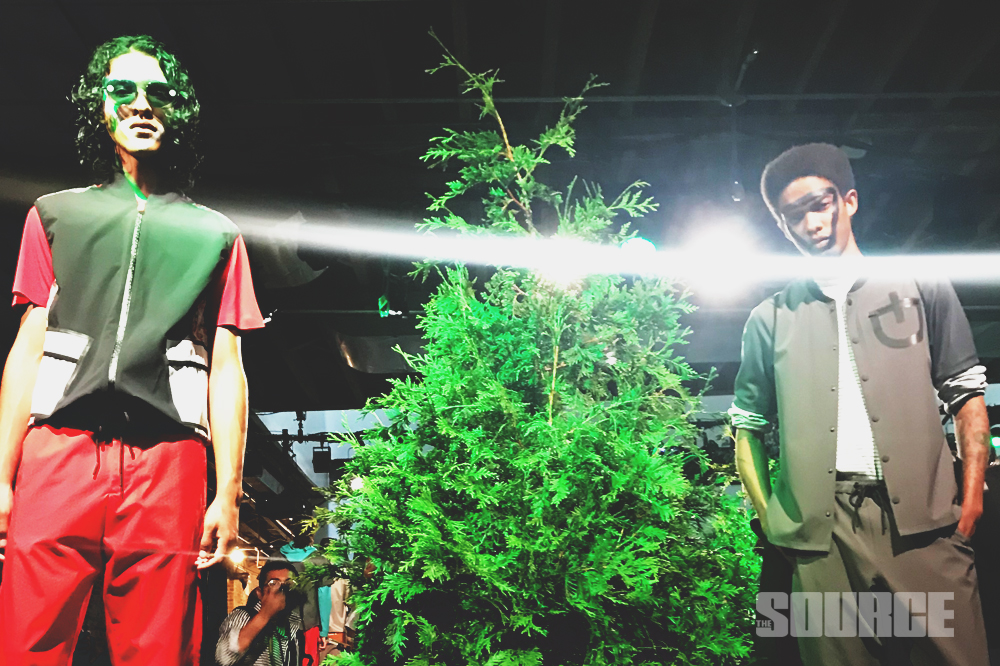
Image: Keenan Higgins / The Source
It seems like you’ve learned from all these worlds and everything that you grew up with, especially from the technical side with the fabrics and the experience with runway production, to create your own brand that is now doing Men’s Fashion Week presentations. Let’s talk a bit about how DYNE came about, the hustle you started with compared to where it is now and what you guys are currently doing.
DYNE has honestly been an idea that I’ve been formulating over the years. I just love technical materials and fabrics, and through the years working with Nike and different companies I was able to meet these different mills and see different techniques that I thought were very interesting. DYNE really came about from my love for fabric, technology, electronics, sports and tailoring; it’s a tailored sportswear company. I came up with the name from being a fellow at MIT in Cambridge, Boston, and while at their media lab I heard the word being discussed in passing. I thought the word had a nice ring to it, so I looked it up and it meant “a unit of force” and how you measure force against objects.
I actually look at myself as a unit of force that’s pushing innovation and the industry forward, so it all just came together three and a half years ago. Partnering with mills like Schoeller Textil AG in Switzerland and Bemis out of Boston, it just was a perfect marriage. Bemis really supports us in a lot of our techniques that we showcase, like the high performance bonding and another technique called Nylock. When you’re quilting jackets and you’re putting fill in them — we don’t use animal products here — you’re puncturing the fabric membrane with a needle. It compromises the actual fabric itself, so Bemis is finding ways of doing that without needle and thread and puncturing the membrane. These are the types of things I like to explore — i spend a lot of time in Bemis Hong Kong offices to implement all these things that you see us showcase on the runway. That’s how it all came to be.
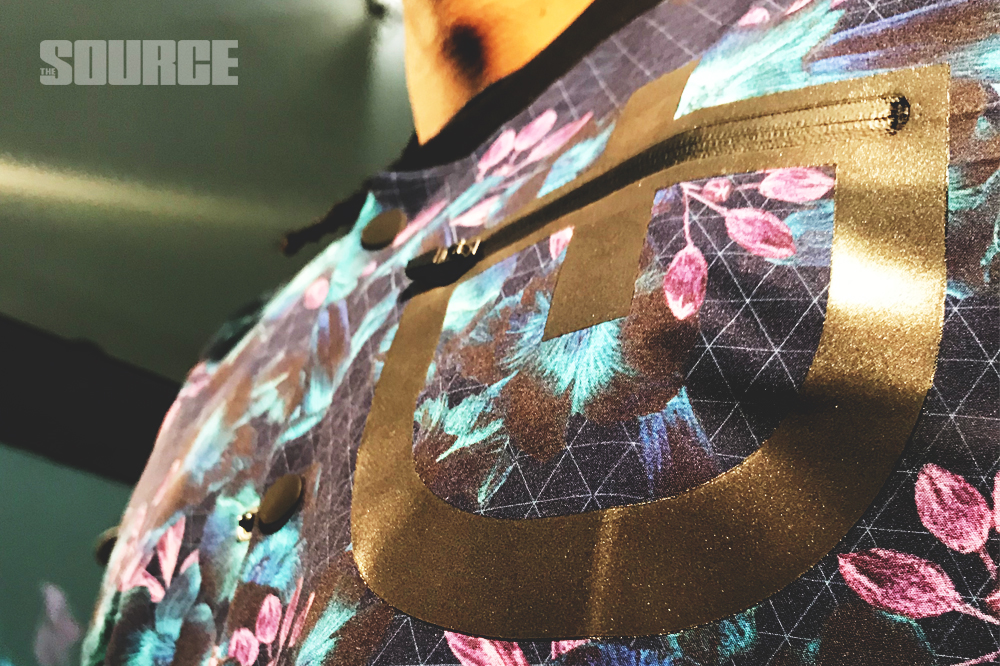
Image: Keenan Higgins / The Source
One of the things that I’ve noticed, especially after seeing how involved you are in the creative process, is the collection’s color palette. That told such a story in itself, from the monochrome pieces to the more vibrant stuff, so how does that part of the process come to fruition?
Every season I have a campaign in my head — I have the story already set up where I can just see it. I have an amazing team around me who helps bring it all to life, like my right-hand guy, Ryan Bevans — yes he does have the same last name as me [Laughs] — and his wife Ayanna. We just happened to meet each other and have the same last name, so it’s a crazy thing. Ryan works close with me on the seasonal story — how it will look digitally and how it should be shot. I worked with an amazing director this season who’s a good friend of mine and is working on a film with me that I’m doing the costumes for. For the “Future Nomad” story, the team just clicked in. Ryan went through the art direction with me, and Eugene Tong does all my styling.
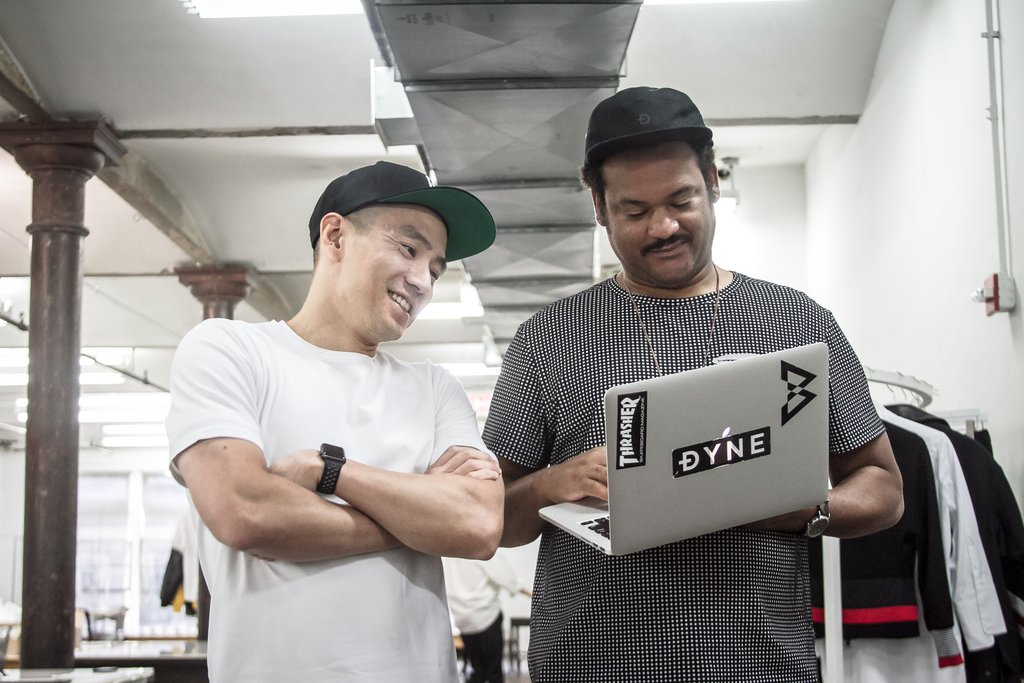
Eugene is a beast! That’s such a good look.
He really is. He’s a good friend and I just love what he’s done over the years, from working in magazine and showcasing designers to his work with Public School and now working with us for the past four seasons. Eugene just takes it to another level and allows me to be who I am. The production is so tight, the styling as we all know is so next level and he just really turns it up. I’m looking at new styles everyday — they’re basically coming from the ether — and he has the ability to say, ‘Hey, step back for a second Chris! Let me put this together.’ I’ll style it one way for the lookbook, and he’ll style it a whole different way for the show production. It’s just amazing to see his point of view on it, and it’s so on brand for us at the same time. It’s great working with him, as well as Katie Cervini who’s his right hand. We’ve developed a really good stride working together.
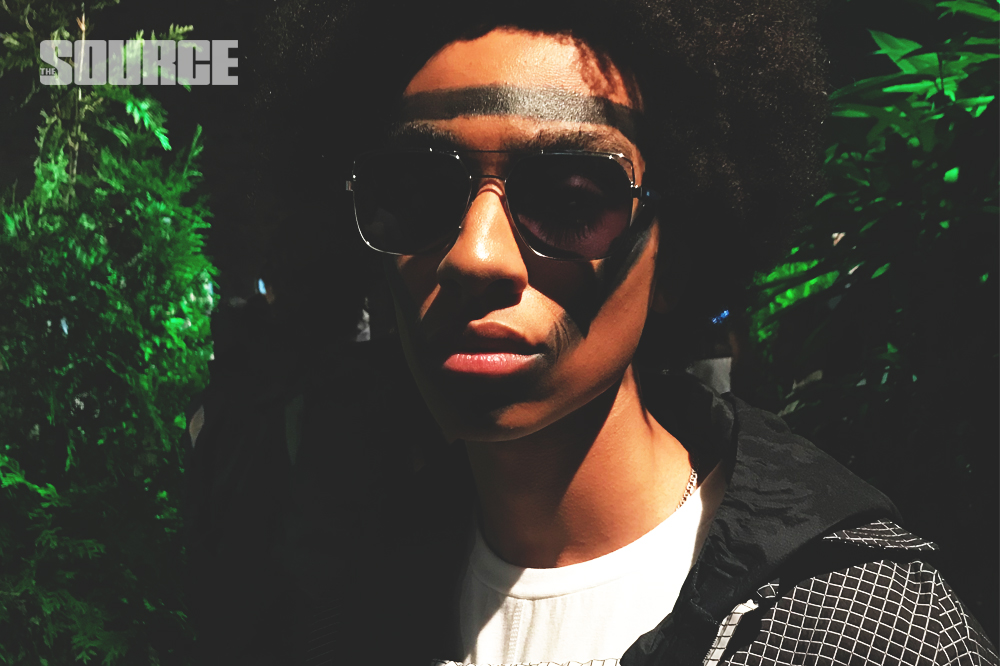
Image: Keenan Higgins / The Source
It seems like the collection comes together from innovative thoughts, actually putting in the work and then presenting it in a way that’s groundbreaking, as you guys did for the NYFW presentation earlier this summer. How did you guys come up with that set-up?
That was just me — you know, in New York there’s so much concrete. A lot of people here don’t get the chance to just go hiking outside, or even go to the Poconos. Central Park or Prospect Park are like the main places you can even go to get some grass on your feet and trees in the backdrop. I wanted to bring nature into our environment with the juxtaposition of technology and innovation. The video that we shot spoke to all of us, and was a concept I’d been trying to do for a long time that finally came together for our Future Nomads story. Ryan was running around different greenhouses in Queens to rent trees, and I needed a specific type of tree to the northwest region because I wanted the air to be filled with pine. It lent itself to the whole nomadic theme of living in the outdoors — a type of post-apocalyptic, future tailored sportswear tech guy [Laughs]! I wanted people to come into our world and lose themselves for an hour out of their day in this little oasis in the Meatpacking District.
Mission accomplished! Any big plans for the future of DYNE?
I’m working on an accelerated checkout with Near-field Communication, or NFC chips, that are embedded into every single garment. The same way we were scanning garments at the event, you as a consumer would actually be able to buy DYNE garments on the spot through your phone.
Dope! So, the purchase link opens up in a web browser?
It opens up in your Apple Pay or your Google Pay. You just pick your size and pick your color and checkout. We ship it to you right from our office.

Image: Keenan Higgins / The Source
To shop the latest from DYNE and stay updated on all the latest news, head to the brand’s official website and follow them over on Twitter, Facebook and Instagram.
